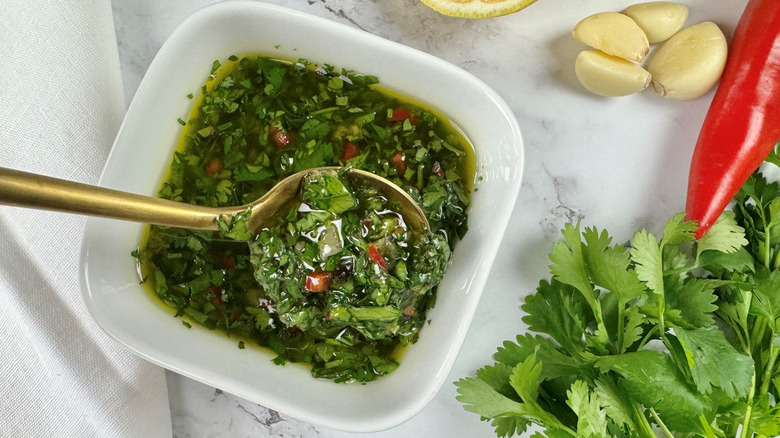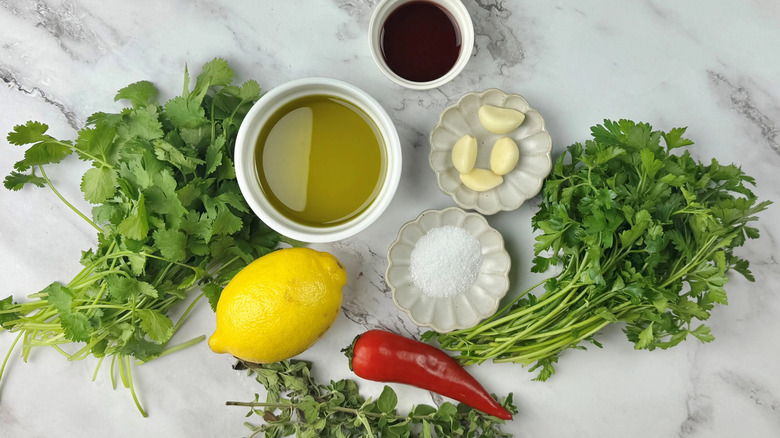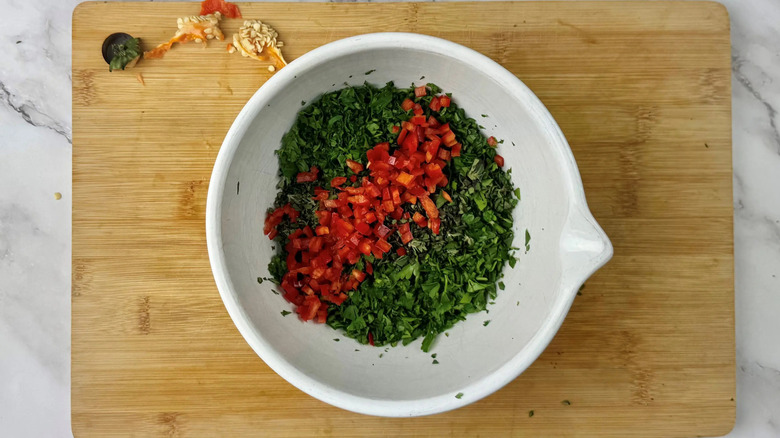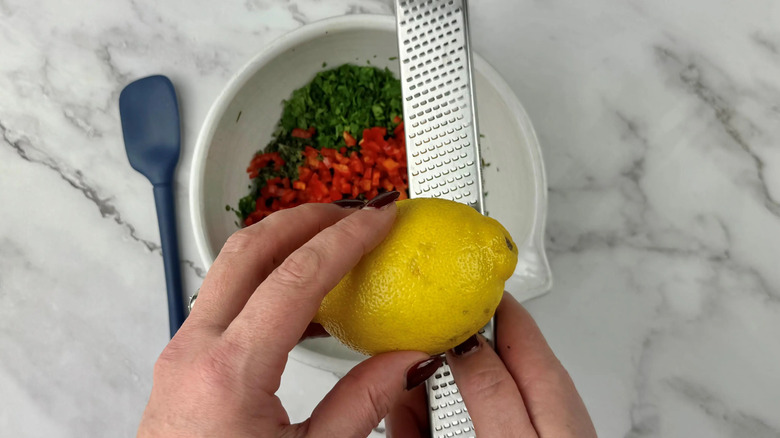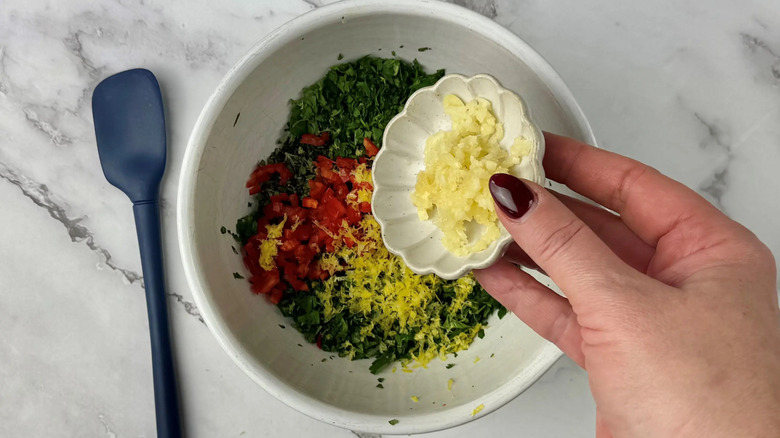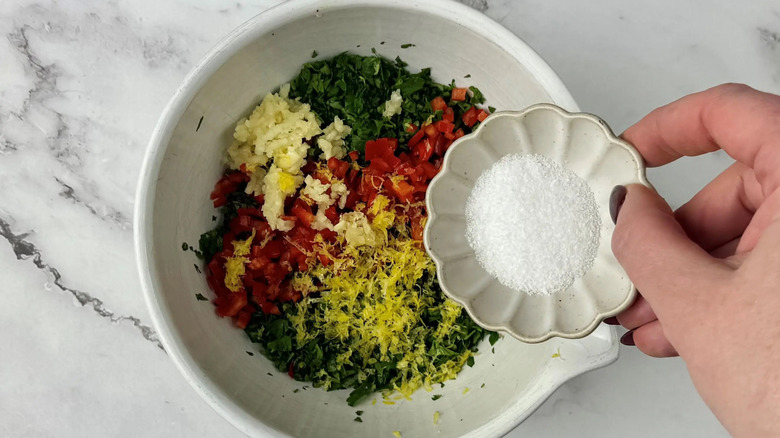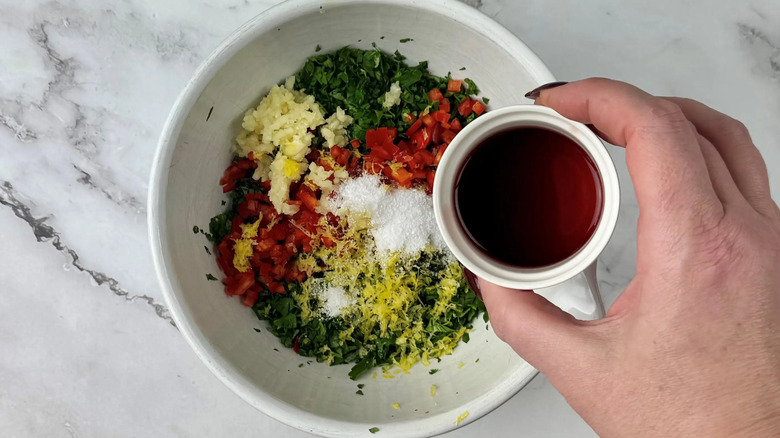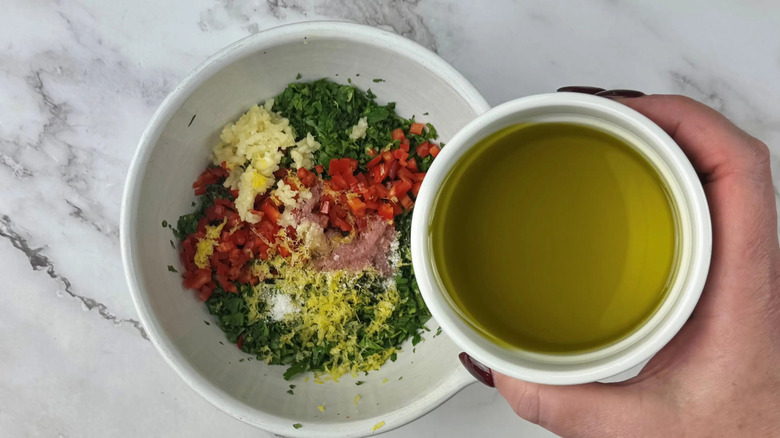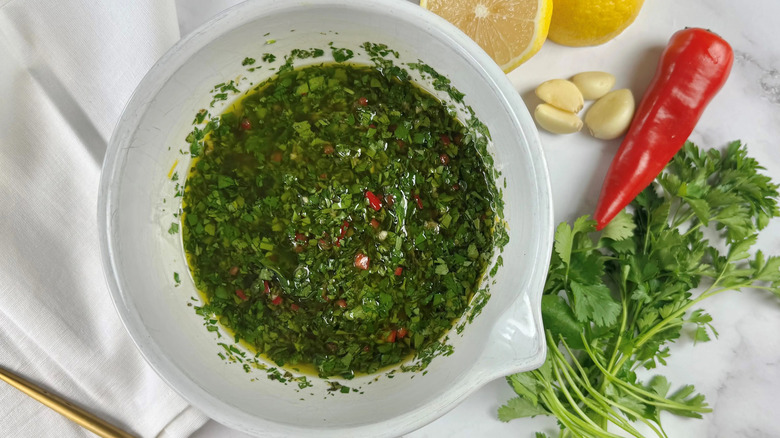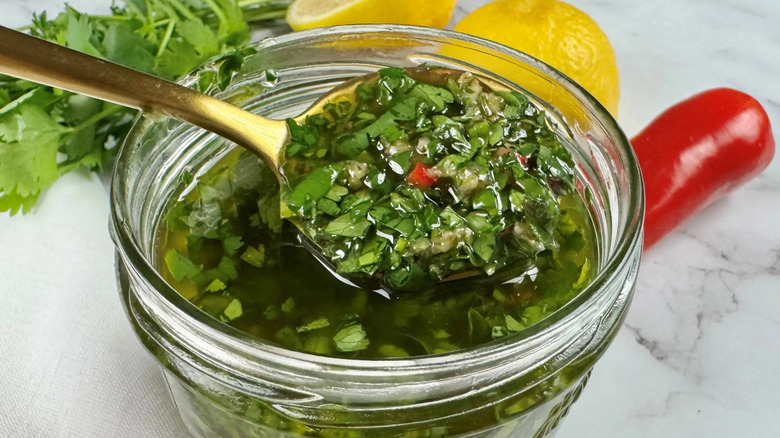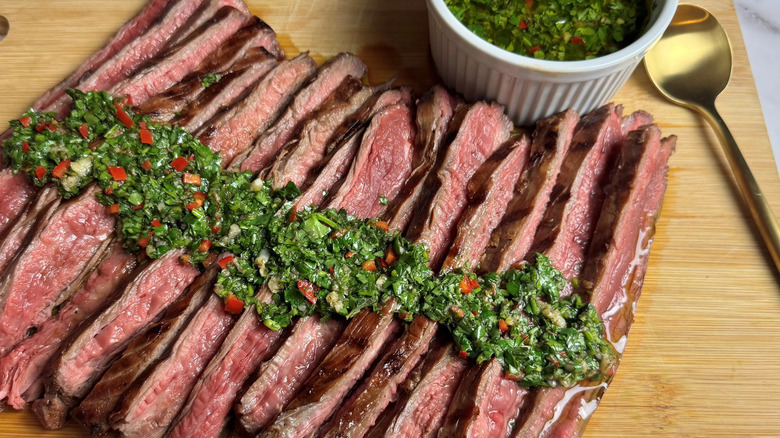Simple, Classic Chimichurri Recipe
Chimichurri is a bright, herbaceous sauce that's super quick to make and doesn't require any cooking. It's an absolute staple for home cooks and professional chefs alike. As recipe developer Julianne De Witt explains, "Chimichurri is an uncooked sauce or condiment originating in Argentina that contains fresh herbs, garlic, olive oil, and vinegar." There are quite a few variations of chimichurri out there, some of which include shallot, some of which exclude the cilantro, and some of which aren't green at all but rather red thanks to the inclusion of roasted red peppers.
For a classic take on chimichurri, you can't go wrong with De Witt's quick and simple recipe. It includes many staple ingredients, including cilantro, Italian parsley, oregano, garlic, and olive oil. De Witt notes that fresh herbs are crucial here, and if you happen to have a bunch leftover (or need to use some up from your garden), this recipe is a great solution for using lots of herbs in one go. Commonly served with or used to baste meats, chimichurri has a whole range of uses — but we'll touch more on that later on.
Gather the ingredients for simple, classic chimichurri
The ingredient list for simple chimichurri is short and fresh. You'll need fresh cilantro, Italian parsley, and oregano (all minced), along with a seeded and finely diced Fresno pepper, lemon zest, minced garlic, salt, red wine vinegar, and olive oil.
Step 1: Add the herbs and pepper to a bowl
Add the cilantro, parsley, oregano, and Fresno pepper to a medium-sized bowl.
Step 2: Zest the lemon
Add the lemon zest.
Step 3: Garlic goes in next
Add the garlic.
Step 4: Season with salt
Add the salt.
Step 5: Pour in the red wine vinegar
Add the vinegar.
Step 6: Add the olive oil
Add the olive oil.
Step 7: Stir, rest, then serve
Stir the ingredients to combine. Allow the chimichurri to sit for a minimum of 10 minutes before serving.
Simple, Classic Chimichurri Recipe
Classic chimichurri is a breeze to whip up, and this versatile Argentinian condiment is great on meats, vegetables, and pretty much anything else.
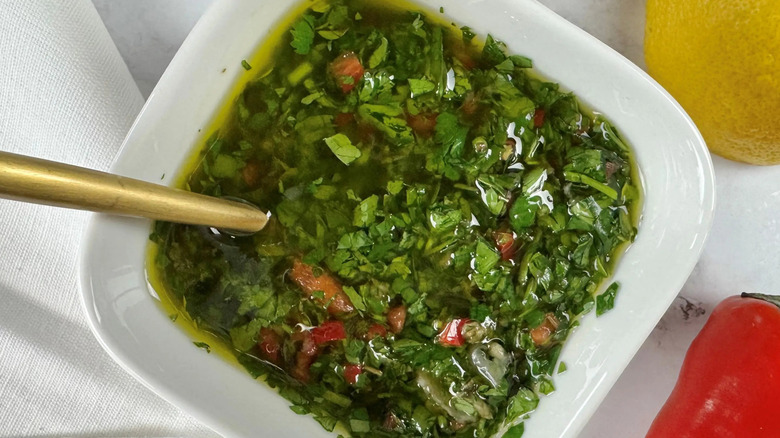
Ingredients
- ½ cup minced cilantro
- ½ cup minced Italian parsley
- 2 tablespoons minced oregano
- 1 Fresno pepper, seeded and finely diced
- ½ lemon, zested
- 4 cloves garlic, minced
- 1 teaspoon kosher salt
- 3 tablespoons red wine vinegar
- 1 cup olive oil
Directions
- Add the cilantro, parsley, oregano, and Fresno pepper to a medium-sized bowl.
- Add the lemon zest.
- Add the garlic.
- Add the salt.
- Add the vinegar.
- Add the olive oil.
- Stir the ingredients to combine. Allow the chimichurri to sit for a minimum of 10 minutes before serving.
Nutrition
| Calories per Serving | 249 |
| Total Fat | 27.1 g |
| Saturated Fat | 3.7 g |
| Trans Fat | 0.0 g |
| Cholesterol | 0.0 mg |
| Total Carbohydrates | 2.3 g |
| Dietary Fiber | 0.7 g |
| Total Sugars | 0.5 g |
| Sodium | 117.3 mg |
| Protein | 0.5 g |
What is the history of chimichurri?
While we know that chimichurri hails from Argentina, the exact origins of the sauce — like so many other foods out there — are a little fuzzy. Nevertheless, chimichurri has a rich history in Argentina and across the world, and there are quite a few origin stories that give this simple sauce quite the intricate lore. The first legend is that of an Irish immigrant named Jimmy McCurry who, longing for something similar to Worcestershire sauce, came up with the bright and zippy chimichurri instead. "According to legend, the sauce took his name, 'Jimmy McCurry', which changed to 'chimichurri' with the Argentinian pronunciation," De Witt says.
Another theory is that chimichurri landed in Argentina by way of Basque immigrants, who brought a sauce of their own that includes similar ingredients of herbs, oil, vinegar, and garlic. This sauce, tximitxurri, was pronounced more like chimichurri once it started gaining popularity in Argentina, providing yet another good lead for the true origin of the herby sauce. There are others who believe that the gauchos, a.k.a. horsemen, who were plentiful in Argentinian, Paraguayan, and Uruguayan grasslands were the ones who ultimately came up with the chimichurri. Regardless of the sauce's true origin, we're all just grateful that it was concocted at all.
What are the best uses for chimichurri?
Due to its super-bright, herbaceous, and almost grassy flavor profile, chimichurri works well when contrasting rich, savory foods. As such, the condiment is perhaps most commonly used to garnish steak, and this is one of De Witt's favorite ways to use it. "I like to serve chimichurri with grilled, lightly marinated flank steak," she tells us, "but it works wonderfully with any red meat (including hamburgers), poultry, or fish."
Let's say you aren't interested in using chimichurri on meat — is it still worth making? Of course it is! This versatile sauce has a flavor profile that can't be missed, so even if you don't eat meat, there's still a world of opportunity. De Witt recommends using it in the same way you would a condiment. So, you could add it to your favorite wrap or sandwich. She also enjoys drizzling it on omelets, over grilled veggies, or tossed into tofu for those vegetarian folks out there.
Chimichurri can also work as a building block for other flavors. De Witt recommends adding sour cream to the sauce and dipping tortilla chips in it, but why stop there? You could also mix chimichurri into any old salsa to give it boost in herbs and freshness, or you could mix some into a homemade pico de gallo since cilantro is a core ingredient in both.
